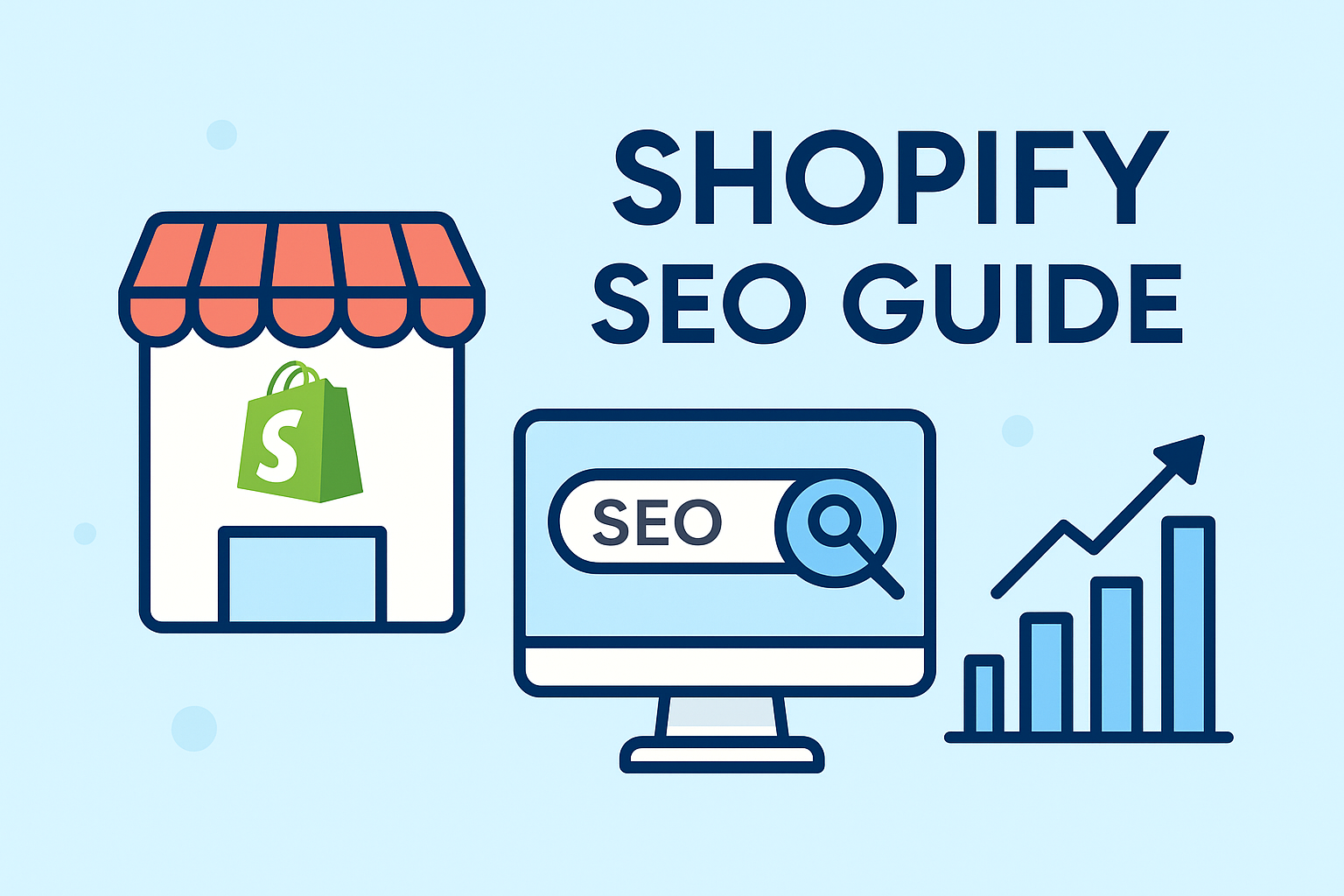Introduction
In today’s competitive e-commerce landscape, simply opening a Shopify store isn’t enough—you also need to drive targeted traffic. One of the most effective and sustainable ways to do that is through Search Engine Optimization (SEO). This guide walks you through how to optimize your Shopify store for SEO so that your products and content rank well on Google, Bing, and other search engines.
1. Why SEO Matters for Shopify Stores
SEO brings free, long-term traffic to your website. A well-optimized product page or blog post can generate leads for years without any ad spend. For new and small Shopify stores, SEO is an essential foundation for sustainable growth.
2. How Search Engines Understand Your Store
Search engines rely on:
- Keywords in titles and descriptions
- Meta tags
- Site speed and mobile-friendliness
- Internal linking structure
- Backlinks from other websites
Shopify stores, by default, are SEO-friendly, but you need to fine-tune each element to get the best results.
3. Keyword Research: Finding What Customers Are Searching For
Use tools like:
- Google Keyword Planner
- Ubersuggest
- Ahrefs or SEMrush
- Shopify’s own search analytics
Look for buyer-intent keywords like:
- “Buy [product name] online”
- “[Product category] free shipping”
Place these strategically in your:
- Product titles
- Descriptions
- Blog articles
- Page URLs
4. On-Page SEO for Shopify
a. Optimize Product Titles & Descriptions
Include target keywords, highlight features and benefits, and write for both users and search engines.
b. Use Image ALT Text
Every product image should have alt text that describes the product using keywords.
c. Customize Page URLs
Avoid default long URLs like /products/product-1234 and use clean URLs like /products/waterproof-backpack.
d. Meta Titles & Descriptions
Set compelling and keyword-rich meta tags under each product/page settings in Shopify.
5. Site Structure & Navigation
Create a simple and clean hierarchy:
Homepage → Category Pages → Product Pages
- Use drop-down menus
- Interlink related blog posts or products
- Avoid deep nesting (no more than 3 clicks from homepage)
6. Technical SEO: Speed, Mobile, Indexing
- Use Shopify Speed Analyzer
- Compress images with apps like Crush.pics
- Use responsive themes
- Submit sitemap.xml to Google Search Console
- Check for crawl errors
7. Content Marketing via Blog
Regular blogging helps drive organic traffic and build authority.
Sample blog topics:
- “How to Choose the Right [Product Type]”
- “5 Ways to Use [Product] in Daily Life”
- “[Product Category] Gift Ideas for 2025”
Use keywords naturally and link to your products.
8. Backlink Building Tips
- Submit guest posts to industry blogs
- List your store in niche directories
- Collaborate with influencers or review bloggers
9. Recommended Shopify SEO Apps
- Plug in SEO – automatic SEO checks
- Smart SEO – structured data and image alt text
- SEO Manager – more control over meta tags, sitemaps, and redirects
10. Final Thoughts
Shopify SEO is not a one-time task—it’s an ongoing process. Start small: optimize your product pages, write one SEO blog per week, and track your progress using Google Analytics and Search Console. Over time, SEO can become your most cost-effective source of high-converting traffic.

